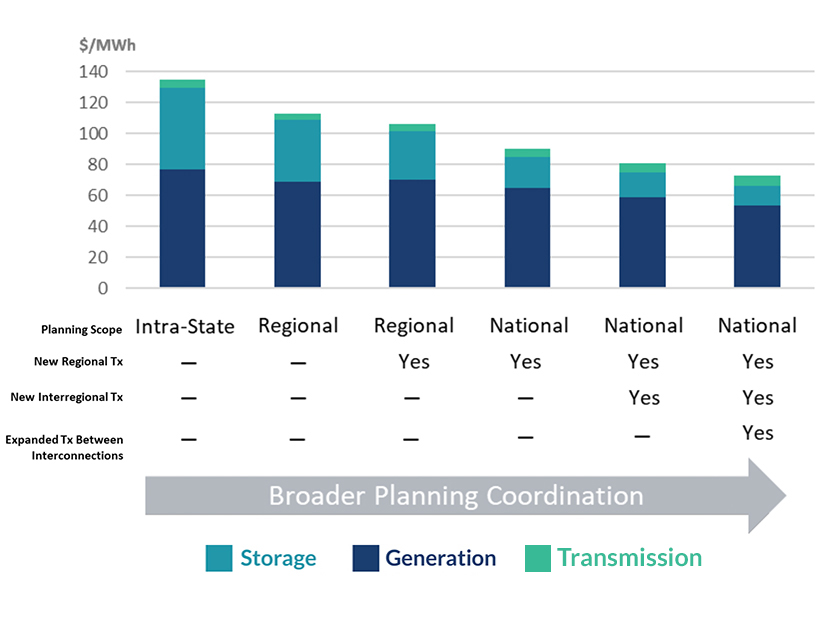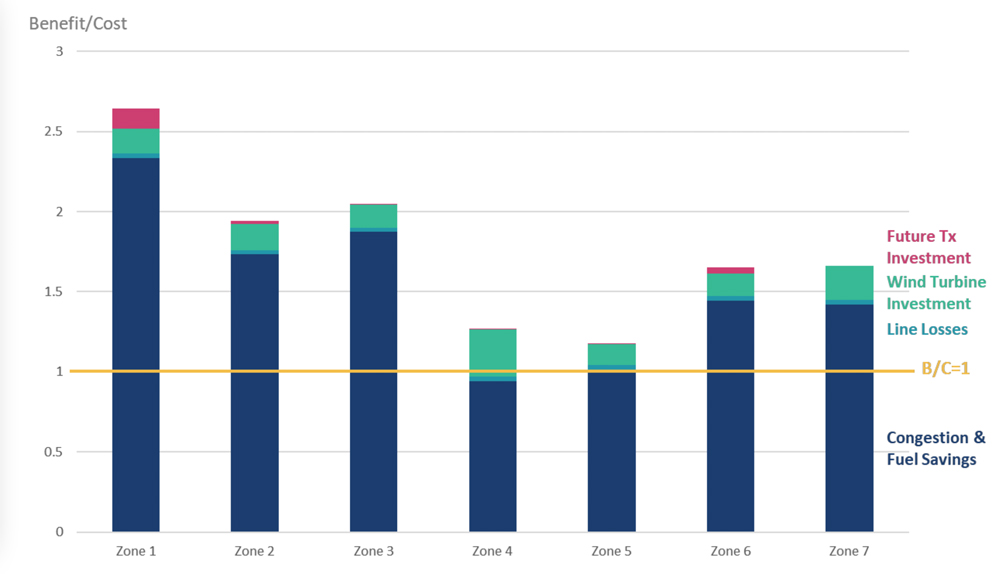
A new study on regional and interregional transmission planning pinpoints inefficiencies that hinder the integration of new renewable resources and recommends solutions to save the industry time and money and keep customer rates down.
The Brattle Group and Grid Strategies released their report Thursday ahead of this Tuesday’s deadline for submitting comments on FERC’s Advance Notice of Proposed Rulemaking (ANOPR) (RM21-17). The commission is looking at potential changes to improve electric regional transmission planning, cost allocation and generator interconnection processes.
The report finds systemic under-planning and under-investment in transmission. It recommends “incorporating realistic projections of the anticipated generation mix, public policy mandates, load levels and load profiles over the lifespan of the transmission investment,” rather than planning piecemeal on a case-by-case basis.
Transmission costs may grow as a percentage of total electricity costs but are still small relative to generation and present a more cost-effective solution that reduces systemwide costs and mitigates electricity rate increases, the report said.
“I think it’s hard to even say that we’re doing transmission planning, except for limited instances … like in the New York public policy work … and MISO MVPs [Multi-Value Projects],” Grid Strategies CEO Rob Gramlich told RTO Insider. “But just to comply with NERC regulations each year and make some upgrades here and there … is hard to call planning.”
Questions for the Future
The commission in its ANOPR gave several examples of questions it wants to address, starting with whether the existing regional planning processes appropriately consider the transmission needs of anticipated future generation, and whether reliability, economic considerations and public policy requirements are inappropriately siloed from one another.
“The geographic scope of regional and interregional RTO planning processes tends to be narrowly focused in its consideration of the transmission-related benefits’ geographic scope, typically quantifying only a subset of transmission-related economic and public policy benefits,” the planning report said.
FERC also posed the question of how to appropriately identify and allocate the costs of new transmission infrastructure in a manner that satisfies the commission’s cost-causation principle: that costs are allocated to beneficiaries in a manner that is at least roughly commensurate with estimated benefits.
Planners now consider only benefits that accrue to their own region without considering the broader set of interregional benefits, the report said.
“Projects near the regional boundaries, such as an upgrade to a shared flowgate, can address the needs of neighboring regions and need to be considered if the goal is to determine the infrastructure that most lowers cost,” the report said.
Without considering interregional needs, quantified benefits will be understated, and even “regional” projects near RTO seams could fail to meet applicable benefit-cost thresholds for regional market-efficiency and public policy needs simply because the planning process ignores the benefits that accrue on the other side of the seam, the report said.
A key driver of MISO’s MVP cost allocation process was state representatives requesting the RTO to evaluate cost-effective transmission solutions that could meet the region’s combined state-level renewable portfolio standards.

“A high-level outlook of how states wish to pursue meeting their goals, or a more detailed set of scenarios, would greatly improve the ability of RTOs to plan their future system without having to develop a specific portfolio of resources to do so,” the report said. (See Tensions Boil over MISO South Attitudes on Long-range Transmission Planning.)
“The findings reinforce that there are many ways FERC can improve the current planning processes, particularly by ensuring that well known and previously tested transmission benefits are fully quantified,” said Barbara Tyran, director of the American Council on Renewable Energy’s Macro Grid Initiative, which supported the planning study.
New public policies and regulatory guidance is needed to implement improved planning processes that can achieve more efficient results, the report said.
FERC also asked whether and how to better coordinate between regional and local transmission planning processes to identify more efficient or cost-effective solutions; and whether it is necessary, and how, to more clearly identify the lines of regulatory authority and oversight between states and federal authorities.
Grid operators and planners need to be part of the policymaking process to ensure efficient and reliable integration of renewables, the Eastern Interconnection Planning Collaborative said in a white paper Wednesday. (See related story, Grid Operators Seek Policy Role, Reliability ‘Safety Valve’.)

